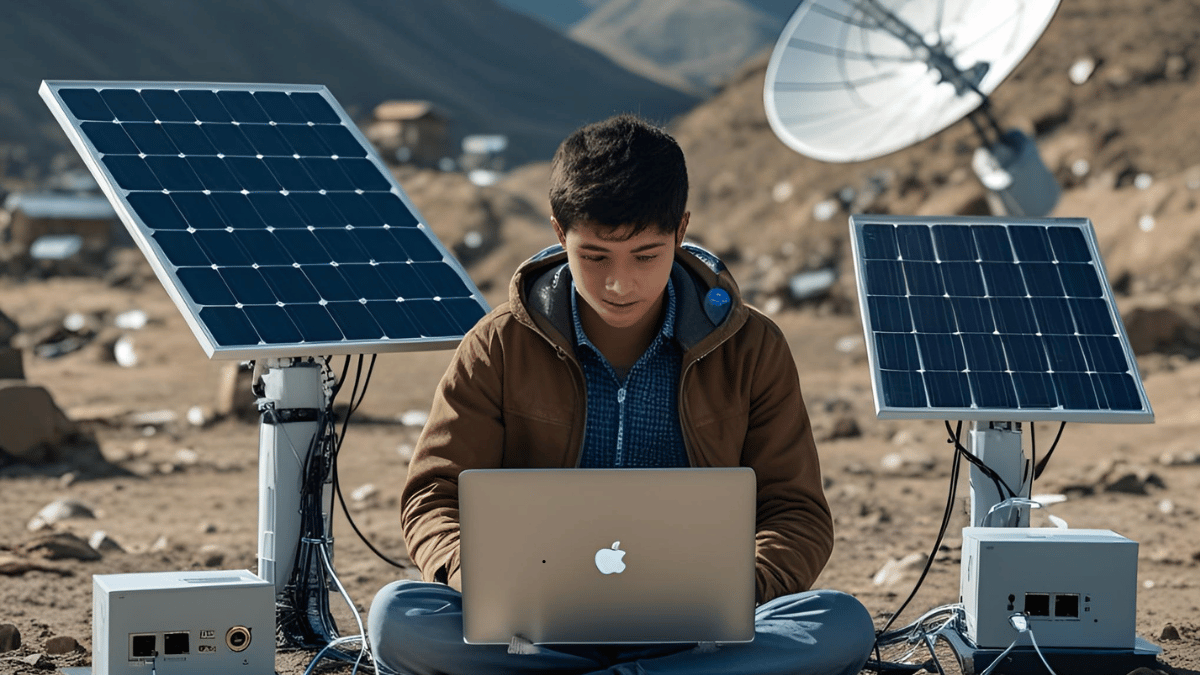Tech Without Borders: How Remote Innovators Are Building Global Impact from Unexpected Places

In a world dominated by Silicon Valley headlines and bustling urban tech hubs, an alternate innovation story is quietly unfolding far from the spotlight. From remote villages in Africa to mountainous regions in South America and politically unstable zones in Asia, remote innovators are transforming how — and where — breakthrough technology is built. These unlikely pioneers aren’t waiting for infrastructure, funding, or even permission. They’re shaping the future with whatever tools they have.
This is the era of tech without borders, where location is no longer a barrier to creation, and where resourceful minds are leveraging digital platforms, decentralized tools, and satellite connectivity to make global impact.
At first glance, it may seem improbable. How can someone in a conflict zone or off-grid community compete with multibillion-dollar startups in New York or Berlin? But this is where ingenuity shines. When faced with unreliable electricity, remote innovators have turned to solar energy. Where broadband fails, they turn to satellite internet. Where capital is scarce, they leverage open-source technology, blockchain crowdfunding, or peer-to-peer learning.
One compelling example is the story of Hadi Partovi, founder of Code.org, whose mission to democratize coding education has reached rural schools in Afghanistan and Kenya. His work proves that talent exists everywhere — it’s opportunity that doesn’t. Through free online resources and mobile-first platforms, Code.org has helped thousands of students in remote regions learn software development skills that would’ve been unthinkable just a decade ago.
Then there’s BRCK, a Kenyan hardware startup that created rugged internet connectivity devices designed for African classrooms. Their innovation is not flashy; it’s functional. BRCK’s solar-powered routers work in environments where WiFi and power grids are unreliable — bridging the digital divide in education and emergency response.
Similarly, in Nepal, Code for Nepal is teaching rural youth to build open-data platforms to track disaster response, deforestation, and access to clean water. These projects aren’t just technical exercises — they’re life-saving tools created by the people most affected by the problems.
Such examples reveal the expanding reach of what was once exclusive — coding, digital entrepreneurship, machine learning — now available to anyone with a device and determination. What makes these remote innovators particularly visionary is not just their technical ability, but their proximity to real-world problems. Unlike VC-funded apps designed to solve first-world inconveniences, these creators are solving for survival, sustainability, and social justice.
Consider Palestinian entrepreneurs in Gaza, where despite blockades and blackouts, a startup scene is emerging. Powered by mobile devices and international mentorship, developers are building AI-driven agriculture apps, freelance networks, and e-learning solutions. Their progress isn’t just innovation — it’s defiance. It’s about claiming agency through code.
Likewise, in war-torn Syria, initiatives like Techfugees and Re:Coded are providing displaced people with digital skills that empower them to freelance remotely or build businesses from camps and shelters. With access to tools like Zoom, GitHub, and remote work platforms like Upwork, these individuals are building resilience, dignity, and in many cases, income.
But this global spread of innovation hasn’t happened by accident. The convergence of several key trends has made it possible:
-
Satellite internet and mesh networks are connecting regions once thought unreachable. Companies like Starlink are playing a crucial role in enabling high-speed connections to remote users, especially during emergencies or infrastructure collapse.
-
Open-source tools have lowered the barriers to entry in everything from coding to machine learning to design. Platforms like GitHub and Kaggle allow anyone, anywhere, to learn, build, and collaborate.
-
Remote work culture has gone mainstream post-COVID-19, validating the idea that location doesn’t determine ability. Companies are more willing to hire talent globally, and many have transitioned to asynchronous workflows that suit different time zones.
-
Decentralized finance (DeFi) and cryptocurrency are opening up capital access where traditional banks fail. Innovators can raise funds from global communities without relying on local financial infrastructure.
Yet for all the progress, the journey isn’t without challenges.
The digital divide remains real — and often brutal. Despite satellite innovations, millions still lack stable internet access or devices. Gender gaps in tech persist more strongly in remote regions. Government censorship and conflict also pose risks to data privacy and freedom of expression.
Then there’s the issue of visibility. Remote innovators often lack platforms to showcase their work, connect with partners, or scale their solutions. That’s where international partnerships, media coverage, and platforms like Ashoka and TechCrunch’s Startup Battlefield Africa can help amplify underrepresented voices.
Some nonprofits and ethical investors are stepping up. Organizations like Unreasonable Group and Acumen provide mentorship, grants, and patient capital to innovators in tough environments. Their approach values long-term social impact over short-term ROI — a model more aligned with the realities of remote innovation.
In this global ecosystem, language diversity is also being addressed. Developers are now building and translating tools into Swahili, Bengali, Quechua, and other regional languages — ensuring inclusivity beyond English-speaking populations.
But perhaps the biggest change is cultural. No longer are people in remote places waiting to be saved by outside experts. They are the experts. They are the creators. They are the future of tech — just as much as anyone in Palo Alto or Tokyo.
At The Visionary Spark, we believe these innovators deserve more than token acknowledgment. They deserve to be at the center of global tech conversations. Their proximity to challenges gives them unmatched insight — and their constraints foster creative, sustainable design.
The rise of remote innovators is a wake-up call for traditional power centers. It’s a reminder that genius doesn’t require a Google badge or venture capital. It thrives in refugee camps, on solar-powered rooftops, in mountain villages — anywhere courage meets connectivity.
In the years ahead, as the world seeks solutions to climate change, education gaps, healthcare access, and economic inclusion, we may find that the most powerful innovations won’t come from boardrooms — but from borderlands.
Because when technology is built by those who need it most, it becomes not just smarter — but more human.



